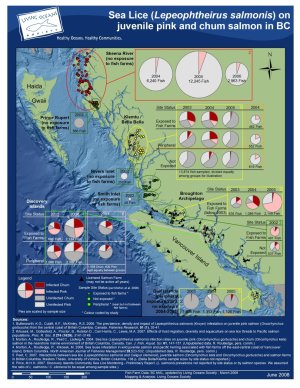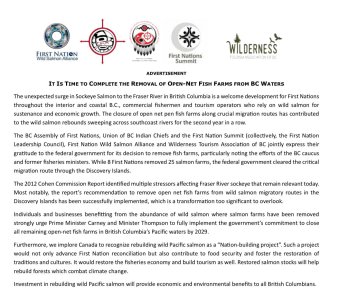I find it a fascinating topic - how parasites & diseases and their life cycles intersect with the life history stages of fish species. Figuring out these causal explanations for these patterns can reveal many unknowns.
WRT that interchange of wild/cultured stock interactions - DFO has been in a very much compromised position for decades in resisting examining those interactions as detailed on many pages on many posts in this forum. Doubt is the leverage to maintain the status quo on ONP operations & ones job in the aquaculture department.
That's why that focus on parasites & diseases and their life cycles & interactions with wild/cultured stock is in it's infancy - and w/o the PSF & other independent scientists and their efforts to date - we would know next to nothing. Which works for DFO Aquaculture & the DFO Comms Branch & the industry they protect.
WRT sea lice & salmon our knowledge has blossomed in the past 20 years or so since DFO (and the Province at the time that was in charge of ONPSF) were forced to admit there was a problem. On the West Coast of Canada one of the earliest peer-reviewed research was this paper:
Used in the construction of this graphic:

Most of the focus has been the inshore/nearshore and the transfer between adult farmed fish, outmigrating wild salmon juveniles and inmigrating, returning adult wild salmon. We know there is normally a period of fallowing between the life history stages of wild salmon and that ONP aquaculture can disrupt that fallowing:
So what did it look like WRT lice dynamics
BEFORE the FFs arrived? Don't know. A mentioned previously, Yves Bastien did his damage in the early 2000s taking FFs out of environmental assessment
BEFORE sea lice research happened. Convenient, eh? No legal accountability for impacts that way.
But we can compare non farm with FF areas as has been done here:
But that research on sea lice dynamics is in the nearshore. What about offshore areas?
Not much - if any research - has been done in Canada - esp. the West Coast on this issue. And we has 20+ years to do this. Again, Convenient, eh? Doubt is again quite the commodity for maintaining the status quo.
HG and other posters on here could be correct about some of the suggested causal mechanisms behind the observations they describe.
In Europe - they have done some offshore research on sea lice:
There are also significant differences between the lice species
Caligus (smaller, pinker, on many nearshore fish spies, esp. herring) and
Lepeophtheirus (larger, grey/black on mostly salmon, more of an offshore species) and where/when they infect different life history stages of salmon.
One of the suggestions I have heard is that seamounts and other areas of offshore feeding maybe where adult salmon get infected with
Lepeophtheirus.









